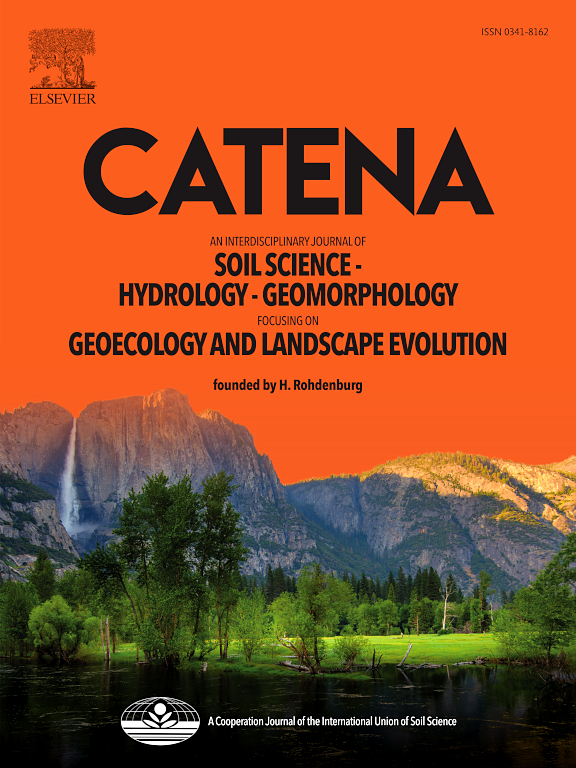Metal accumulation and contamination in sediments of 12 plateau lakes in Southwest China in response to human activities over the past century
IF 5.4
1区 农林科学
Q1 GEOSCIENCES, MULTIDISCIPLINARY
引用次数: 0
Abstract
Historical metal accumulation and contamination in individual lakes have been studied extensively, but a comprehensive understanding at the regional scale remains limited, which is essential for establishing baselines and formulating management strategies. The present study addresses this knowledge gap by analyzing the concentrations and accumulation rates of lithogenic and heavy metals in sediment cores from 12 lakes on the Yunnan–Guizhou Plateau (YGP) of China over the past century. The lakes were categorized into urban-industrial (UI) and agricultural-natural (AN) groups according to catchment-specific socioeconomic data. The decreasing concentrations and accumulation rates of lithogenic metals in the lakes, e.g., Al, K, Fe and Ti, typically since the mid-20th century, indicated changes in human-induced soil erosion. The enrichment factors (EFs) identified Cr, Cu, and Ni as mainly lithogenic sources, and they presented temporal variations similar to those of lithogenic elements, whereas Cd was the predominant contaminant despite low accumulation rates, followed by As, Hg, Pb and Zn, with the UI lakes displaying greater contamination than the AN lakes. Metal contamination also exhibited clear historical differences between the UI and AN lakes. Contamination of most metals began in the 1950 s in the UI lakes, 30 years earlier than in the AN lakes, due to early industrial development and discharges. Contamination of As, Cd, Hg, Pb and Zn has increased since the 1980 s with rapid economic development in both types of lakes, and the accumulation rates of anthropogenic metals have indicated slightly decreasing contamination since the 2000 s due to the implementation of environmental policies, although the enrichment factor has continuously increased. The variations in mass accumulation of heavy metal contamination (ACCa) in lake sediments were positively correlated with catchment-specific socioeconomic indicators, e.g., the proportion of industrial output, proportion of cropland area and urbanization rate, highlighting the causal link between economic development and metal contamination.

求助全文
约1分钟内获得全文
求助全文
来源期刊

Catena
环境科学-地球科学综合
CiteScore
10.50
自引率
9.70%
发文量
816
审稿时长
54 days
期刊介绍:
Catena publishes papers describing original field and laboratory investigations and reviews on geoecology and landscape evolution with emphasis on interdisciplinary aspects of soil science, hydrology and geomorphology. It aims to disseminate new knowledge and foster better understanding of the physical environment, of evolutionary sequences that have resulted in past and current landscapes, and of the natural processes that are likely to determine the fate of our terrestrial environment.
Papers within any one of the above topics are welcome provided they are of sufficiently wide interest and relevance.
 求助内容:
求助内容: 应助结果提醒方式:
应助结果提醒方式:


